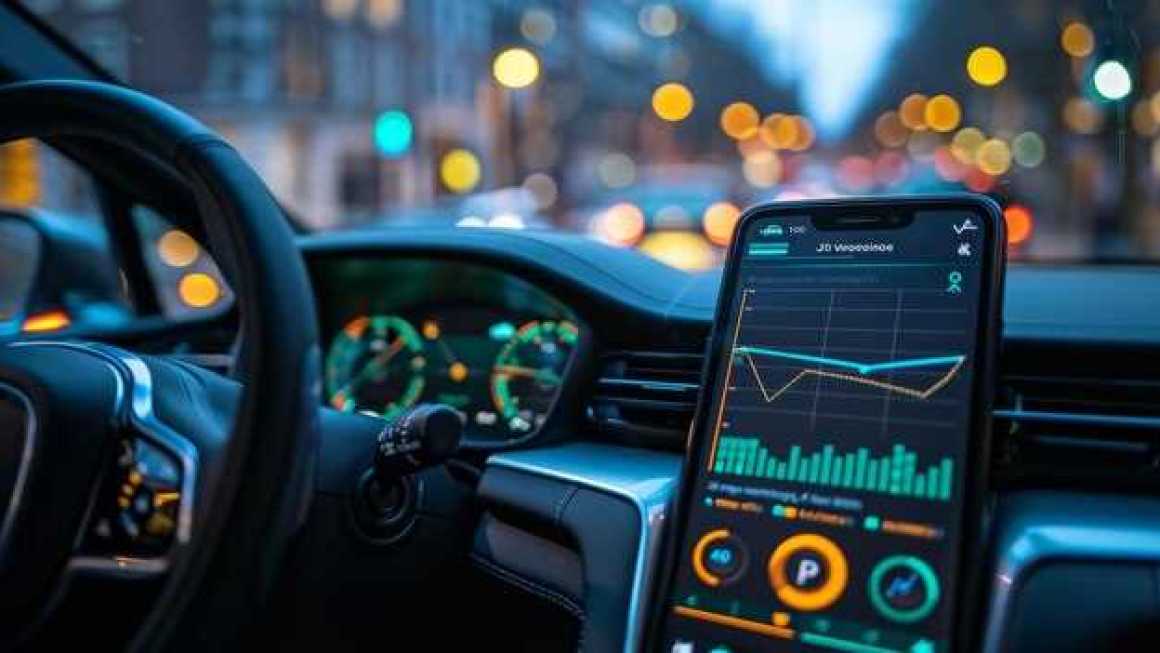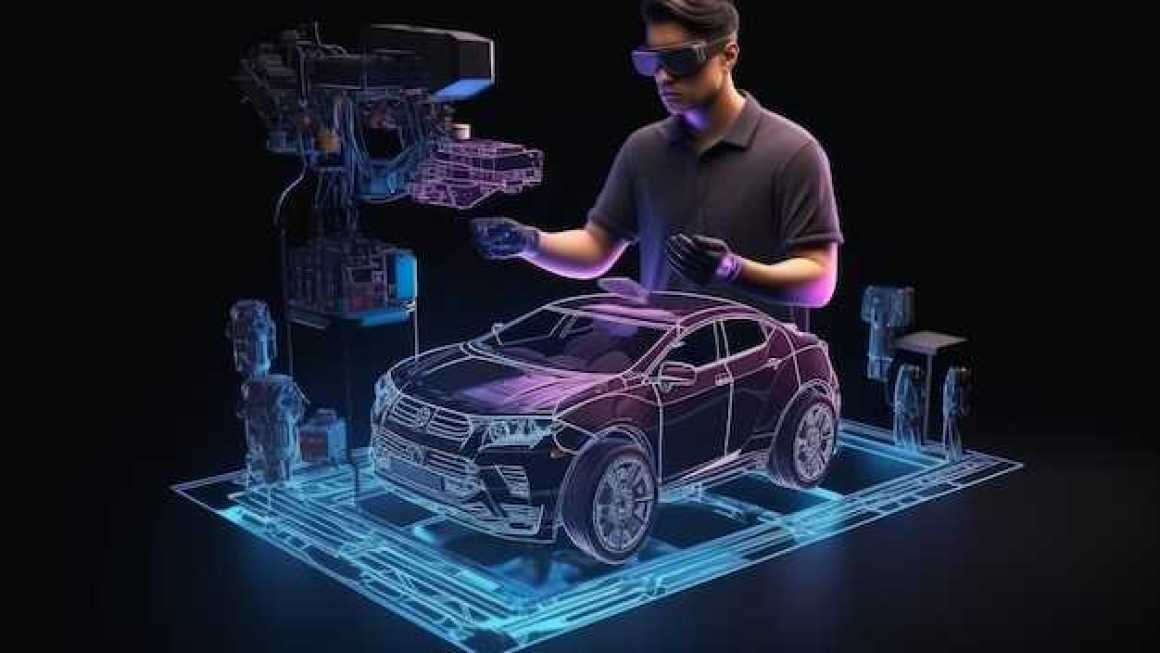
In recent years, the automotive industry has witnessed a remarkable evolution with the integration of advanced technologies. Among these innovations, Augmented Reality (AR) stands out as a game-changer, particularly in enhancing Head-Up Displays (HUD). These systems not only provide essential information directly in the driver’s line of sight but also elevate the overall driving experience by merging the digital and physical worlds.
The implementation of AR in automotive dashboards signifies a significant shift in how drivers interact with their vehicles. By overlaying critical data such as speed, navigation directions, and safety alerts onto the windshield, drivers can maintain their focus on the road while staying informed. This seamless integration of technology helps reduce distractions, making driving safer and more intuitive.
As the demand for smarter vehicles grows, AR dashboards are paving the way for the future of automotive design. They contribute to a more immersive driving experience by providing real-time feedback and contextual information adapted to the driver’s needs. This transformation is not just about aesthetics; it represents a fundamental change in how we perceive and engage with our vehicles, underlining the potential of AR to redefine the automotive landscape.
How AR Dashboards Enhance Driver Awareness and Safety

Augmented Reality (AR) dashboards in the automotive industry are revolutionizing the way drivers interact with their vehicles and the surrounding environment. By integrating digital information directly into the driver’s line of sight, these advanced head-up displays (HUDs) significantly improve situational awareness, thereby enhancing overall safety.
AR dashboards project essential data, such as speed, navigation cues, and warnings, directly onto the windshield or a designated display area. This technology minimizes the need for drivers to divert their gaze from the road, reducing the risk of distractions that can lead to accidents. The seamless integration of this information encourages a more intuitive driving experience.
Moreover, AR dashboards can overlay critical information regarding nearby hazards or obstacles, such as pedestrians, cyclists, or road construction. By highlighting these potential dangers in real time, drivers can make informed decisions quickly, improving reaction times and preventing collisions.
Additionally, these dashboards can adapt to varying driving conditions. For instance, in inclement weather, AR displays might project enhanced visibility cues or warnings about slippery roads. This proactive approach to safety empowers drivers with the knowledge they need to navigate challenging scenarios with confidence.
Furthermore, data collected by AR systems can facilitate improvements in driver behavior. By analyzing patterns and providing feedback, automotive manufacturers can develop features aimed at reducing reckless driving habits, ultimately contributing to a safer road environment.
In conclusion, AR dashboards represent a significant advancement in automotive safety technology. By enhancing driver awareness and providing crucial information in an unobtrusive manner, they help create a safer driving experience for everyone on the road.
Integrating Automotive HUD with Navigation and Real-Time Data

Integrating automotive heads-up displays (HUD) with navigation systems and real-time data creates a transformative driving experience. These augmented reality dashboards (AR) enhance situational awareness, allowing drivers to access essential information without diverting their attention from the road.
A primary advantage of HUD is its ability to project navigation directions directly onto the windshield. This feature enables drivers to follow routes intuitively, with visual cues appearing in their line of sight. By eliminating the need to glance at handheld devices or built-in screens, HUD systems increase safety and reduce the risk of accidents.
Incorporating real-time data into HUD systems further amplifies their utility. Drivers can receive live updates on traffic conditions, weather changes, and nearby points of interest. For instance, if there is a traffic jam ahead, the HUD can suggest alternative routes instantaneously, ensuring efficient travel.
Moreover, the integration of vehicle diagnostics information into the HUD enhances the driving experience by providing critical data such as speed, fuel levels, and engine alerts. This seamless access to pertinent information fosters better decision-making and proactive vehicle management.
As the automotive industry continues to evolve, the convergence of HUD technology with navigation and real-time data will play a pivotal role in improving driver engagement and safety. Future developments may include more sophisticated AR applications, potentially using artificial intelligence to anticipate driver needs and refine the overall transport experience.
In summary, integrating automotive HUD with navigation and real-time data not only elevates the functionality of vehicles but also aligns with the growing demand for innovative and user-centric driving solutions.
The Future of User Interface Design in AR-Enabled Vehicles
The integration of augmented reality (AR) in the automotive industry is revolutionizing how dashboards are designed and experienced by drivers. As vehicles become increasingly equipped with advanced technologies, the user interface (UI) must evolve to enhance usability and safety.
AR-enabled dashboards are set to redefine interaction paradigms by providing real-time information superimposed onto the driver’s field of vision. This technology allows important data, such as speed, navigation instructions, and vehicle diagnostics, to be displayed contextually, reducing the need for the driver to divert attention from the road.
One of the primary challenges in designing AR interfaces is ensuring that they are intuitive and non-intrusive. Designers must carefully consider the amount of information presented at any given time to prevent cognitive overload. The future will see the implementation of adaptive interfaces that can tailor content based on the driving context, such as adjusting information density in complex driving situations or simplifying displays in more relaxed conditions.
Furthermore, the emergence of voice recognition and gesture control systems will allow drivers to interact with their dashboards without physical touch. This transition towards hands-free operation will enhance focus on driving, providing a seamless experience while maintaining safety regulations.
As AR technology develops, we can expect more personalized experiences. User-specific settings, preferences, and visual themes could be integrated, allowing for a customized interface that fits individual driver profiles. This level of personalization will create a more engaging driving environment, promoting comfort and satisfaction.
Finally, the collaboration between automotive manufacturers and software developers will be crucial in paving the way for innovative AR dashboards. By merging expertise in design, ergonomics, and technology, the automotive sector can redefine what it means to drive, making the user interface not just a tool for navigation but a comprehensive driving companion.



